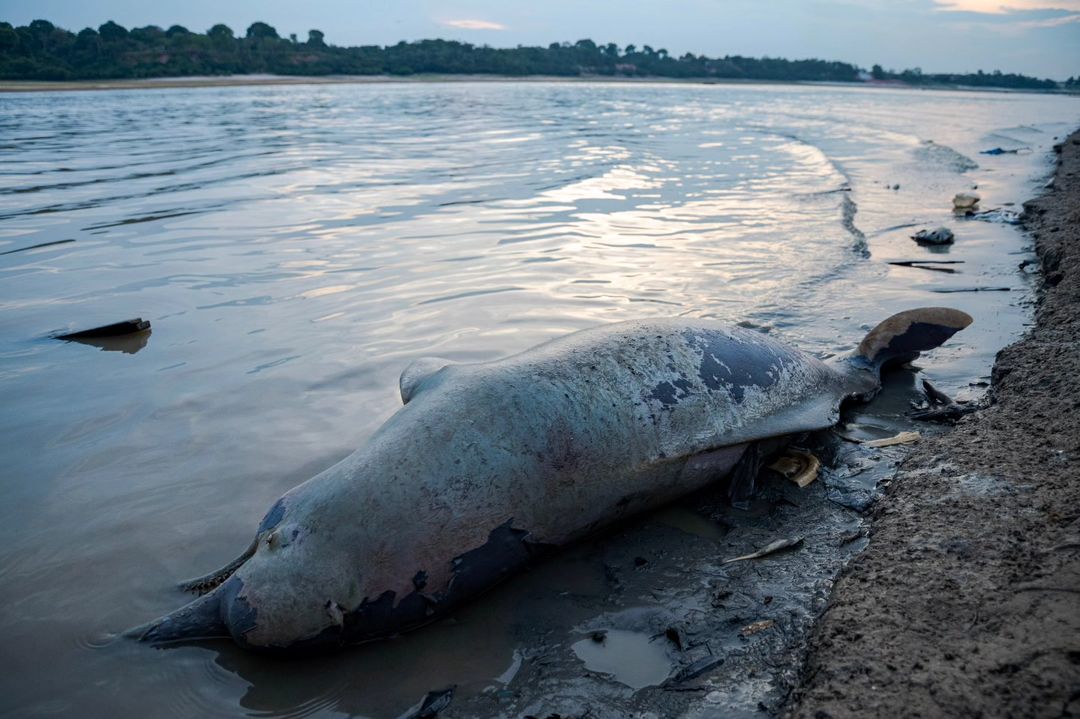Brazil’s Ministry of Science, Technology and Innovation, on Monday announced the death of more dolphins in the region around Tefé Lake, which is key for mammals and fish in the area.
The drought in the Amazon River and the record-high water temperatures are likely causing more than a hundred deaths per week in the dolphin population according to the Mamirauá Institute for Sustainable Development, a research facility funded by the Brazilian Ministry of Science, Technology and Innovation.
And the situation is not likely to improve: along with the floating carcasses of the endangered mammals, thousands of dead fish have been emerging from the steamy water.
The Amazon area–and Brazil in general– is one of the areas most affected by climate change, partly due to aggressive human action which, in recent years, has led to further environmental degradation. However, the definitive cause of the die-off has not yet been identified. Researchers are considering the possibility of disease and sewage contamination as well. “According to our experts, it is certainly connected to the drought period and high temperatures in Lake Tefé, in which some points are exceeding 39 degrees Celsius (102 degrees Fahrenheit)”, a spokesperson of the Institute told CNN.
The Amazon Working Group, which represents 503 organisations, said the water level along one tributary of the Amazon River has been dropping by 20 cm (8 inches) a day. There had been some 1,400 river dolphins in Tefé Lake, said Miriam Marmontel, a researcher from the Mamiraua Institute. “In one week we have already lost around 120 animals between the two of them, which could represent 5% to 10% of the population,” said Marmontel. Researchers and activists are trying to rescue as many surviving dolphins as possible by transferring them to the main body of the river Amazon where the water is cooler.
There are severe implications that go beyond the safety of the dolphins. According to the Brazilian National Institute of Meteorology, in September the rainfall over Lake Tefé had been barely a third of the historical average. Amazon’s drought is a problem for biodiversity as well as for human wellness and economy. More than 500,000 people could be in crisis, since the waterway is the main mode of transportation: many channels have dried up, river journeys now take more than a day and canoes have to navigate more mud than water, causing delays in food supplies. Fifteen municipalities are now in a state of emergency and forty others are on a state of alert.
Ane Alencar, science director at the Institute for Amazonian Environmental Research, who believes climate change is having a big impact on the region, said: “I think it is already a reflection as to what may be the new normal that we are going to be facing in the future. “People will lose their goods, homes, cattle. We usually neglect the impacts of drought on human life and health.”











